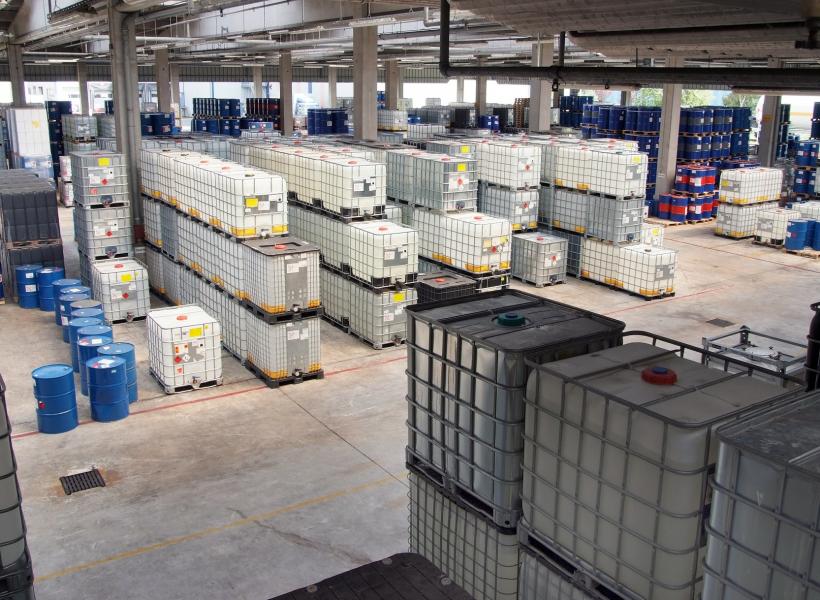Storage arrangements include bulk storage, solid piling, palletized pile storage, shelf storage and rack storage. There are differences among the five different arrangements. From a fire control perspective, the differences and behaviors for fire control are in the flues, i.e. horizontal and vertical air spaces created by the storage configurations.
BULK STORAGE consists of piles of unpackaged material in loose, free flowing condition, such as powder, granules, pellets or flakes – these materials can be found in silos, bins, tanks, or in large piles on the floor of storage buildings.
SOLID PILING consists of carton, boxes, bales, bags, etc, in direct contact with each other.
PALLETIZED STORAGE consists of unit loads placed on pallets
SHELF STORAGE consists of items on a structure where solid shelves are less than 30 inches deep, measured from aisle to aisle and usually less than 2 feet apart.
RACK STORAGE can be defined as storage in racks that use combinations of vertical, horizontal and diagonal members, with or without solid shelving, to support stored material. Racks can be fixed in place or portable. Loading may be either conducted manually by usually using lift trucks, stacker cranes or hand placement, or automatically by using machine controlled storage and retrieval systems.
Typical rack storage configurations include:
- Open-frame single row rack
- Open-frame double row racks
- Double- row racks with solid shelves
- Double-row rackswith slatted shelves
- Automatic storage rack
- Multiple row rack
- Flow through pallet rack
- Drive-in rack, two or pallets deep
- Flow-through and portable racks
- Cantilever rack
- alantrauger's blog
- Log in to post comments
